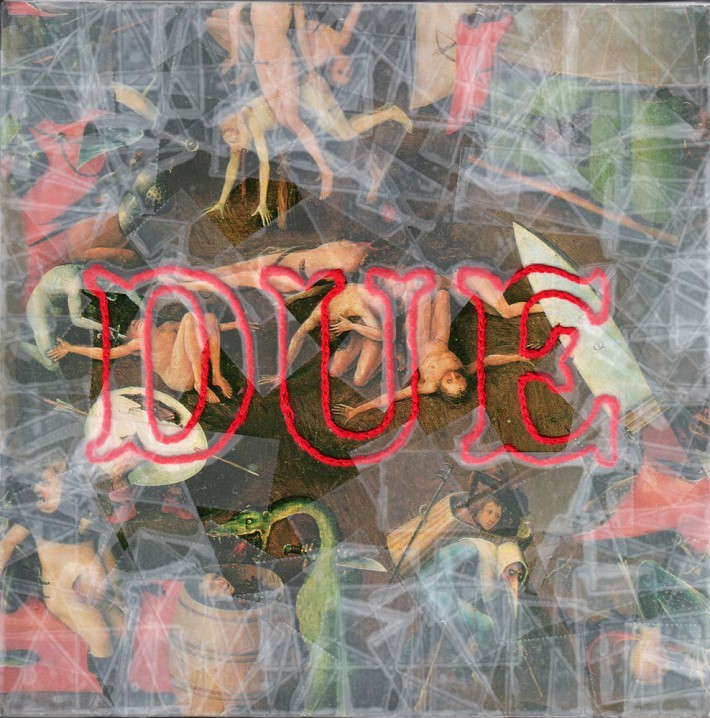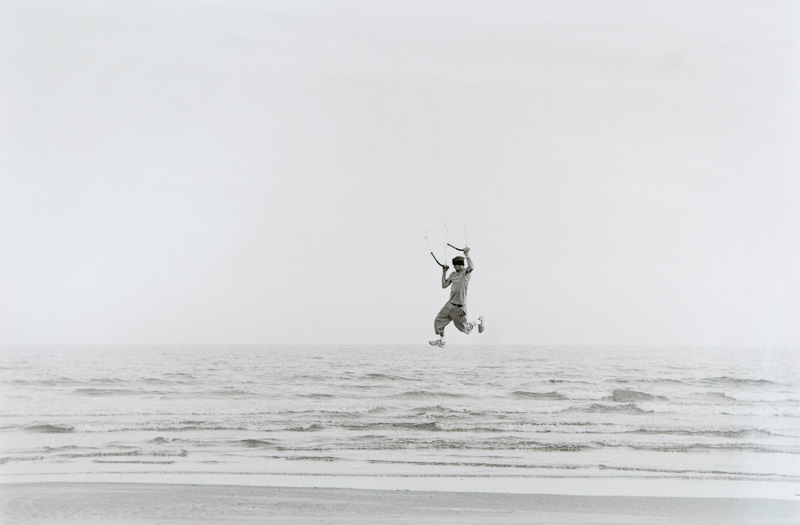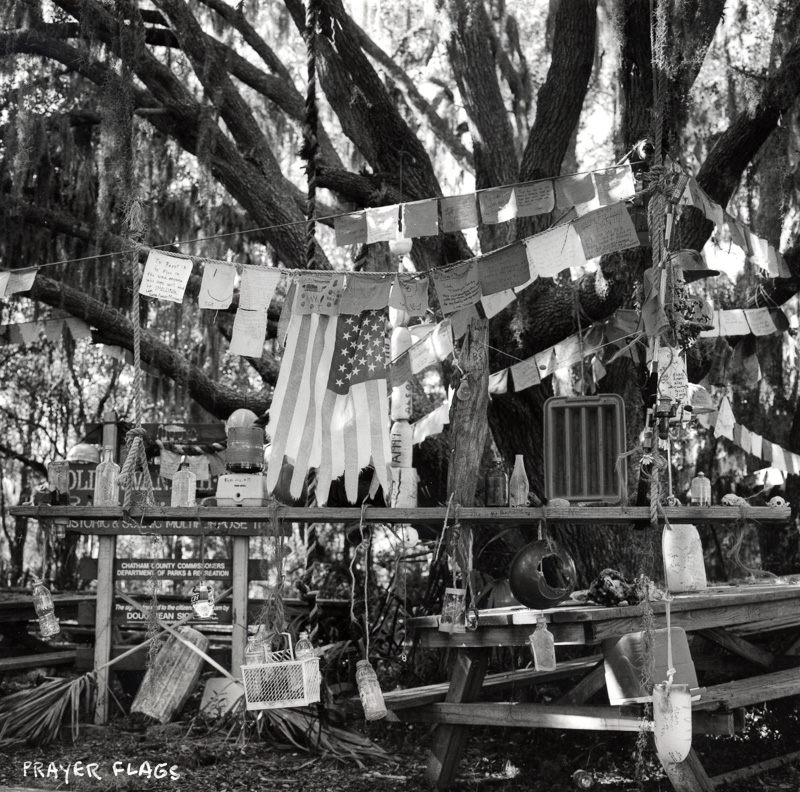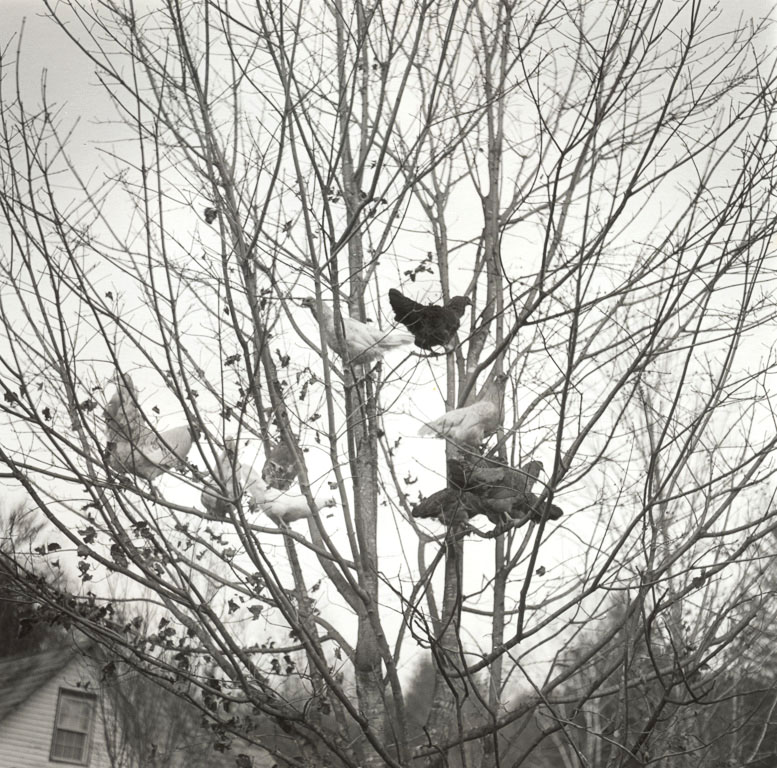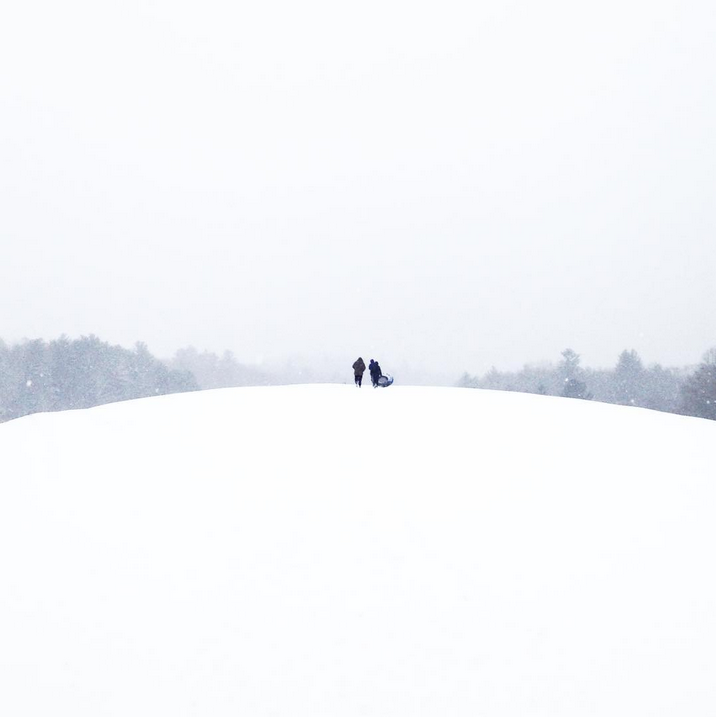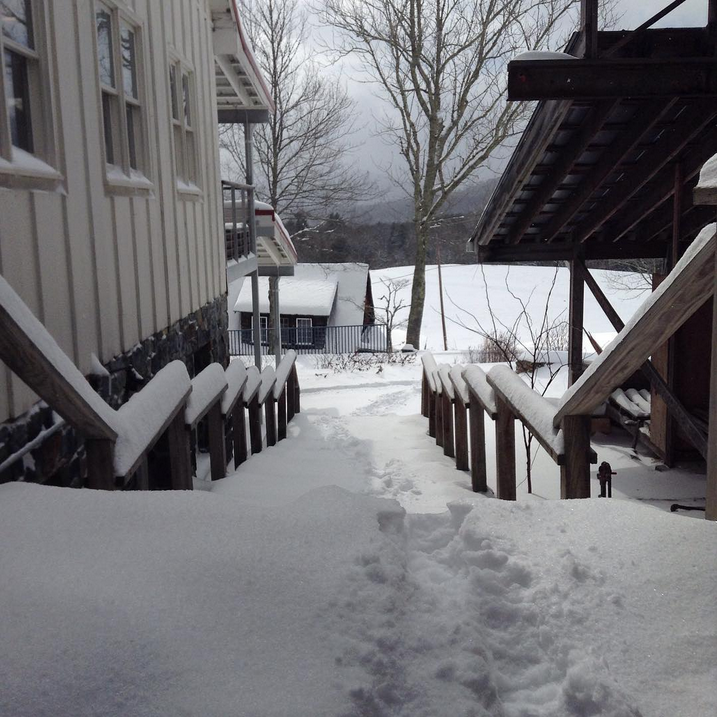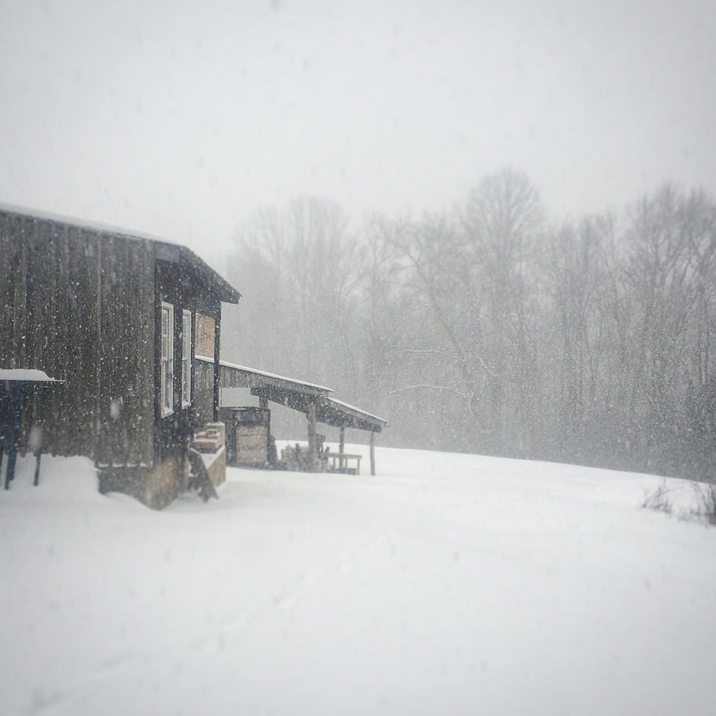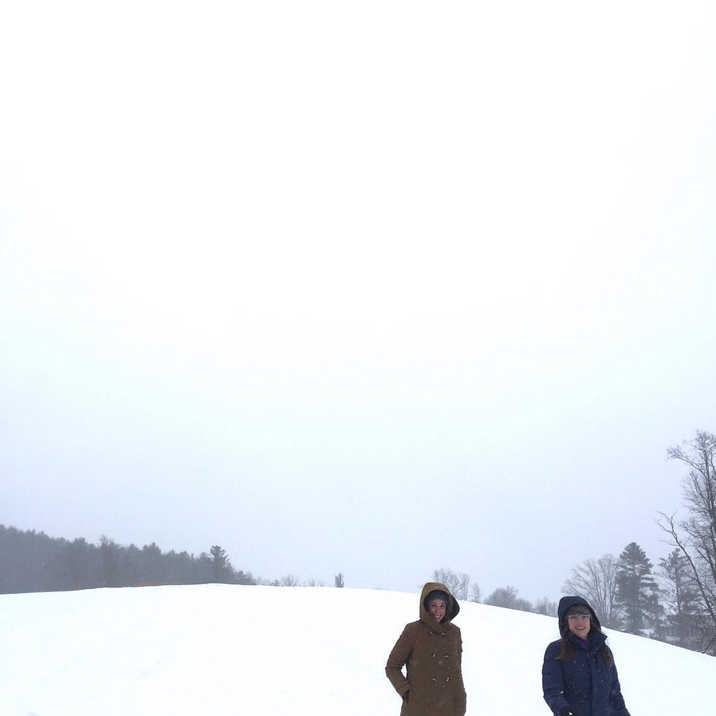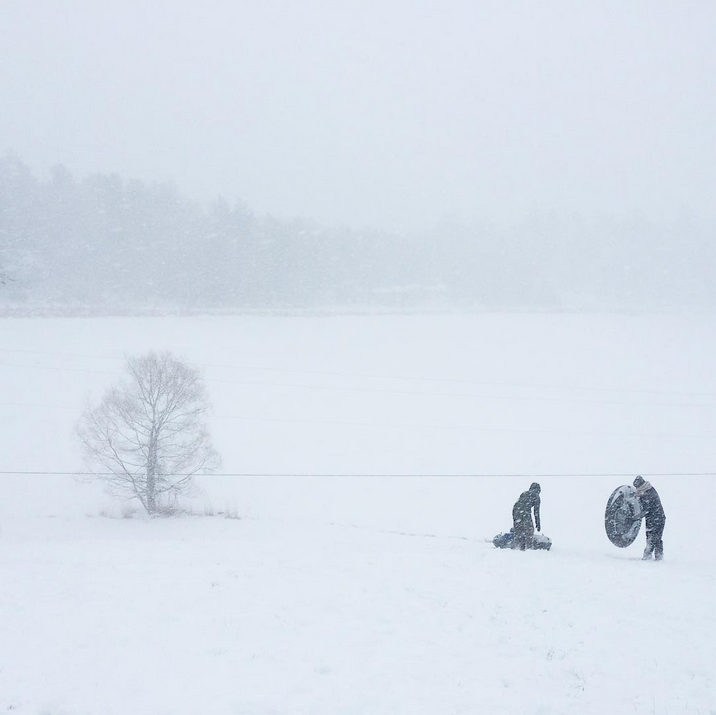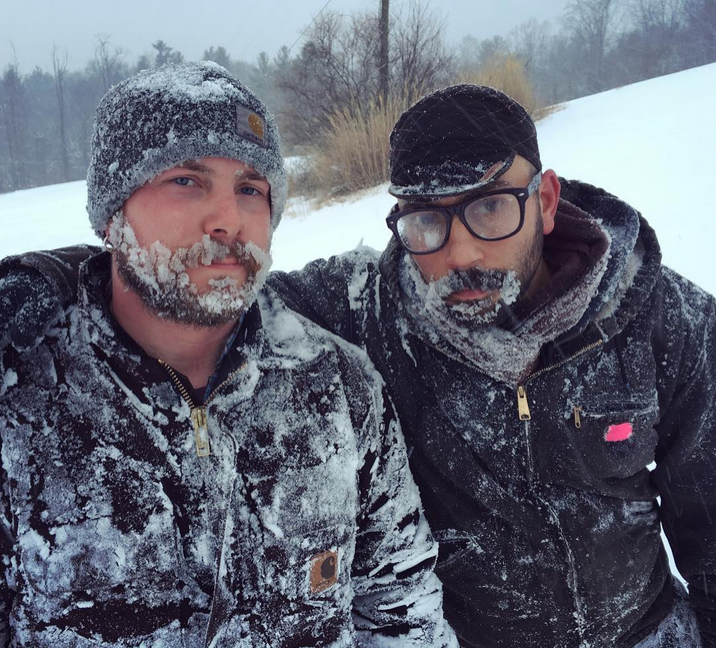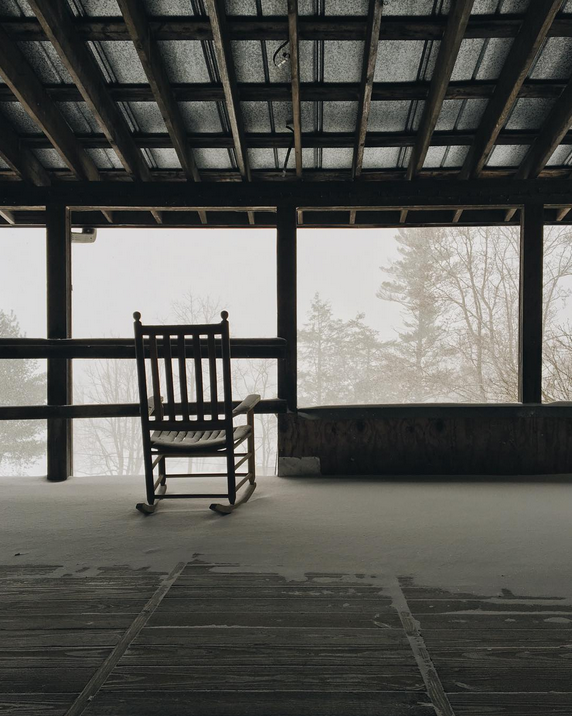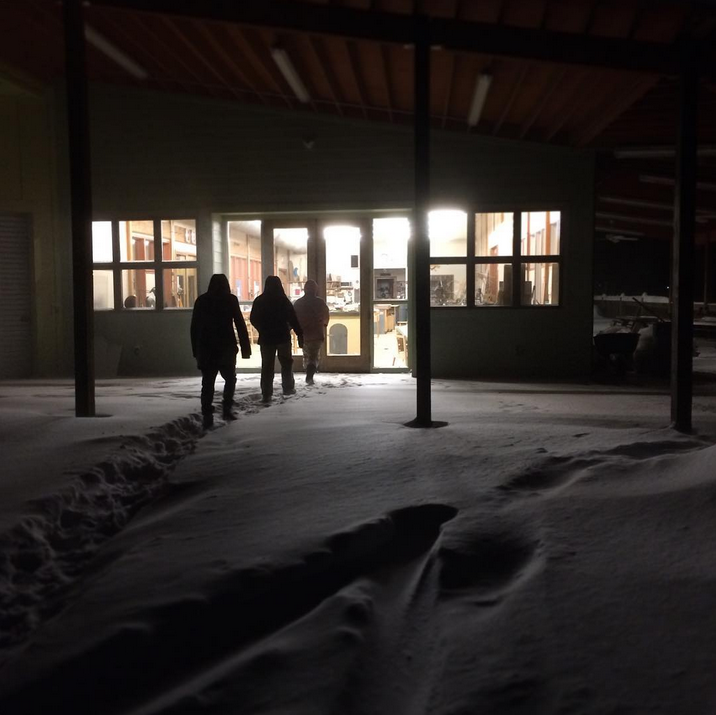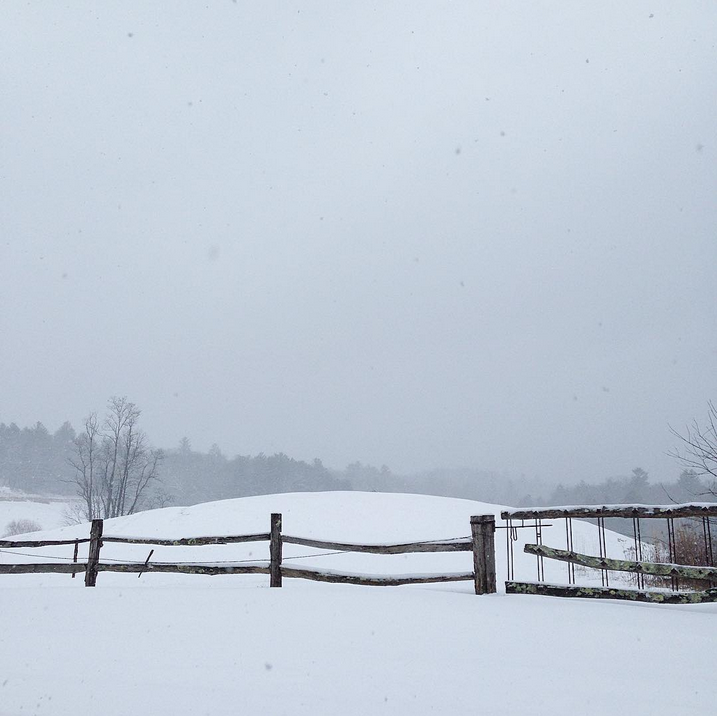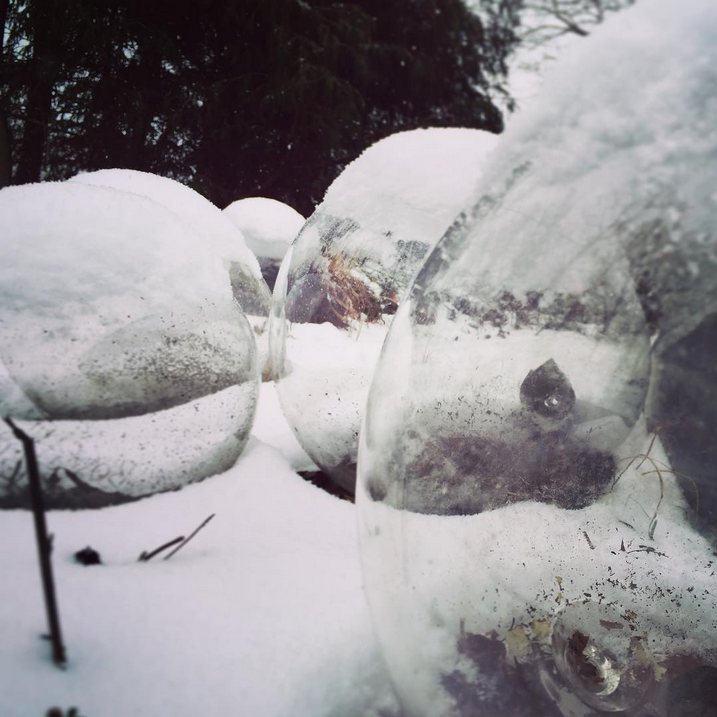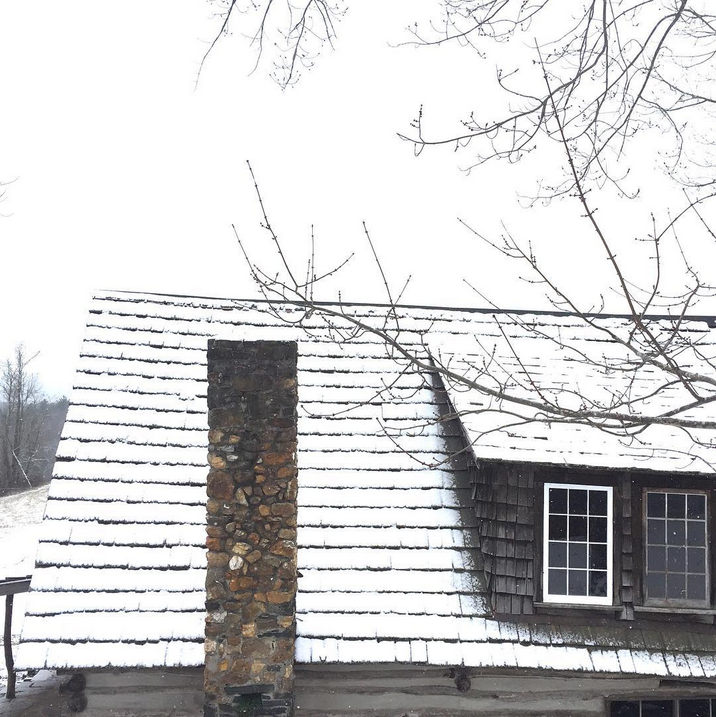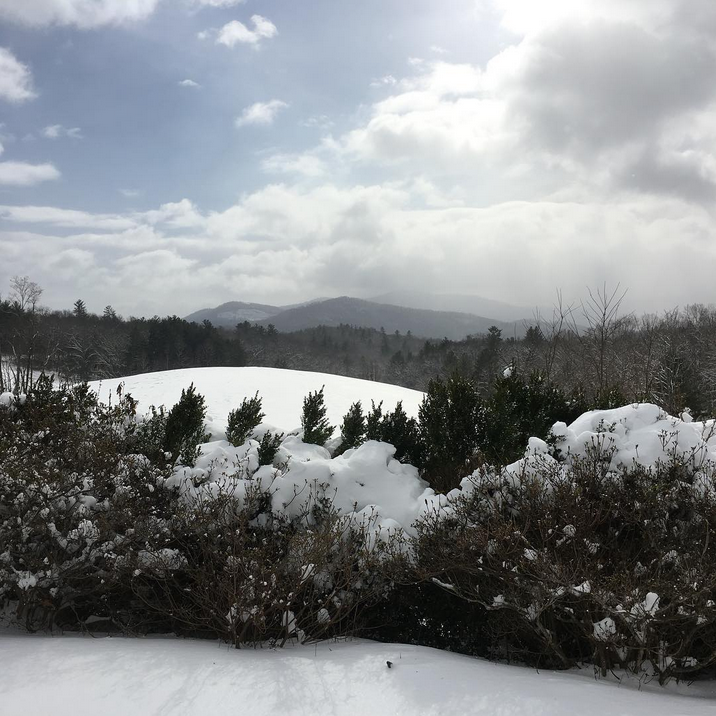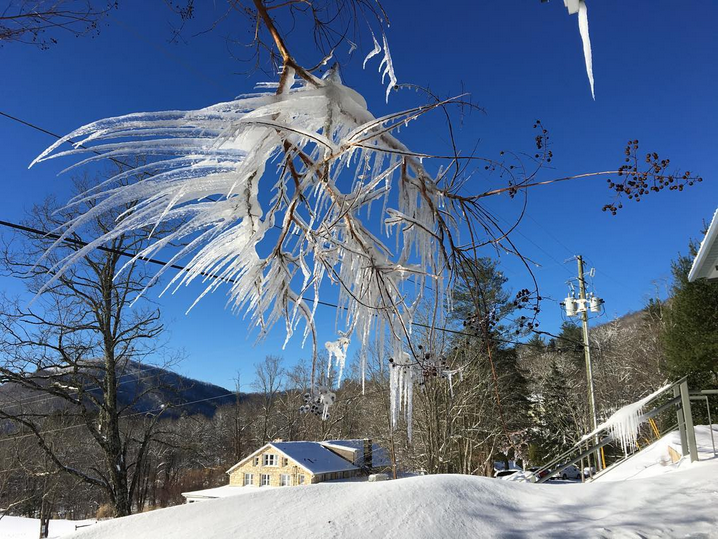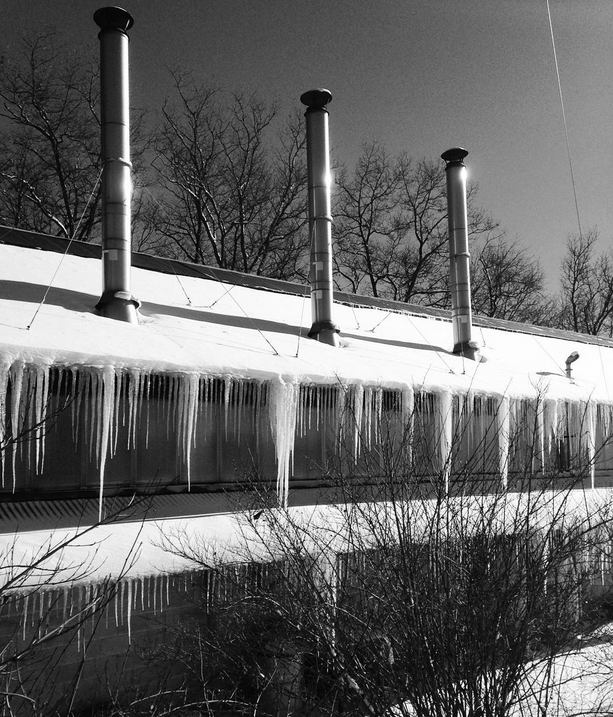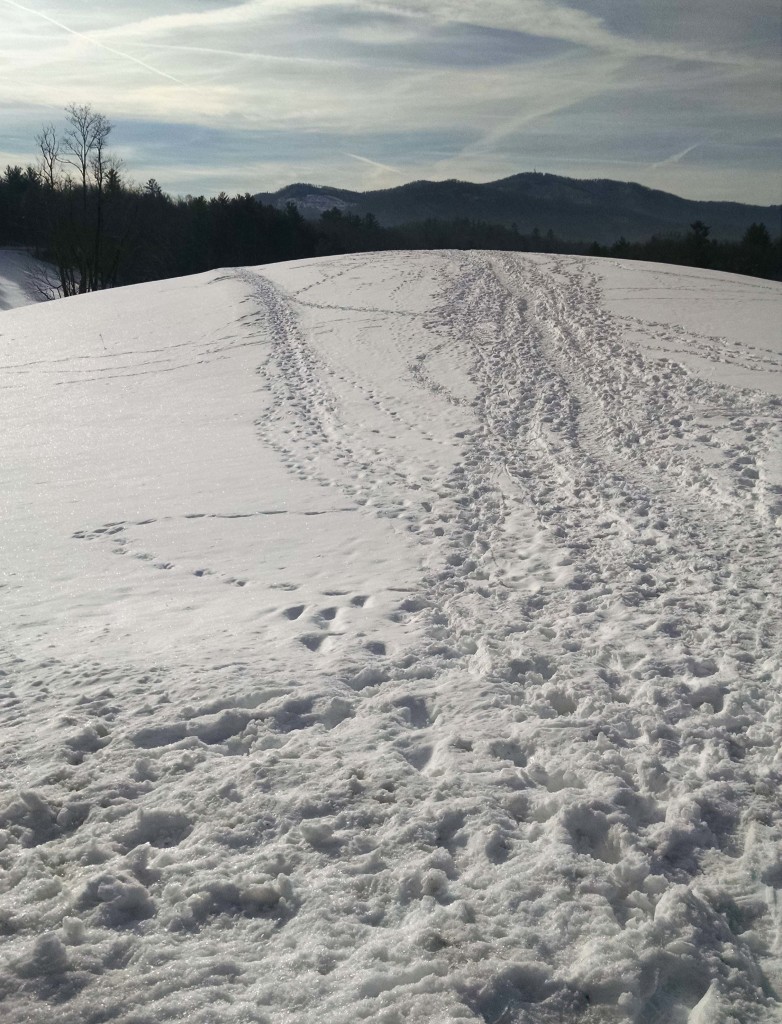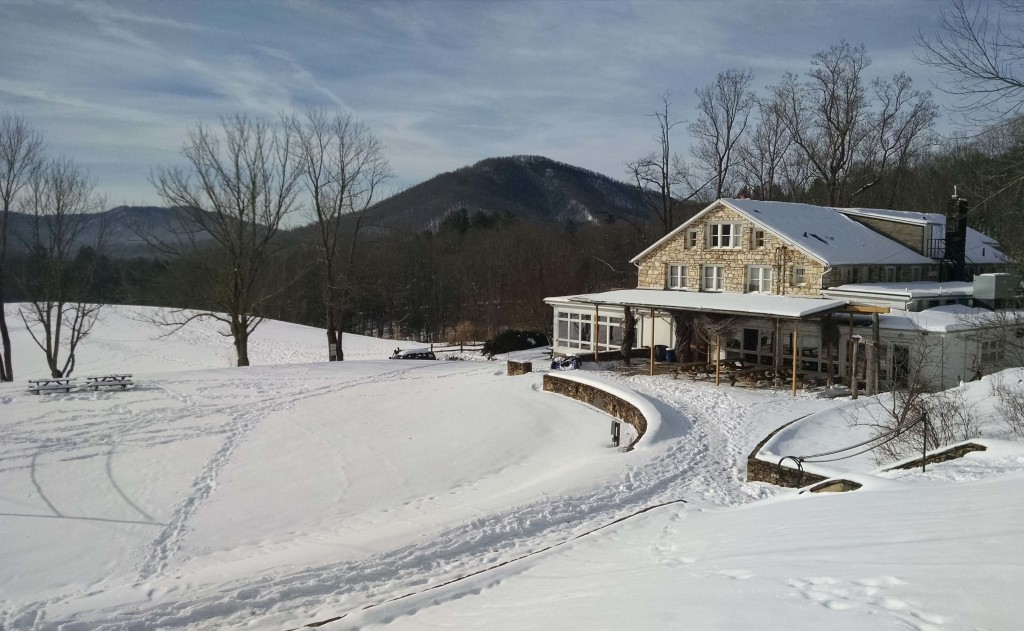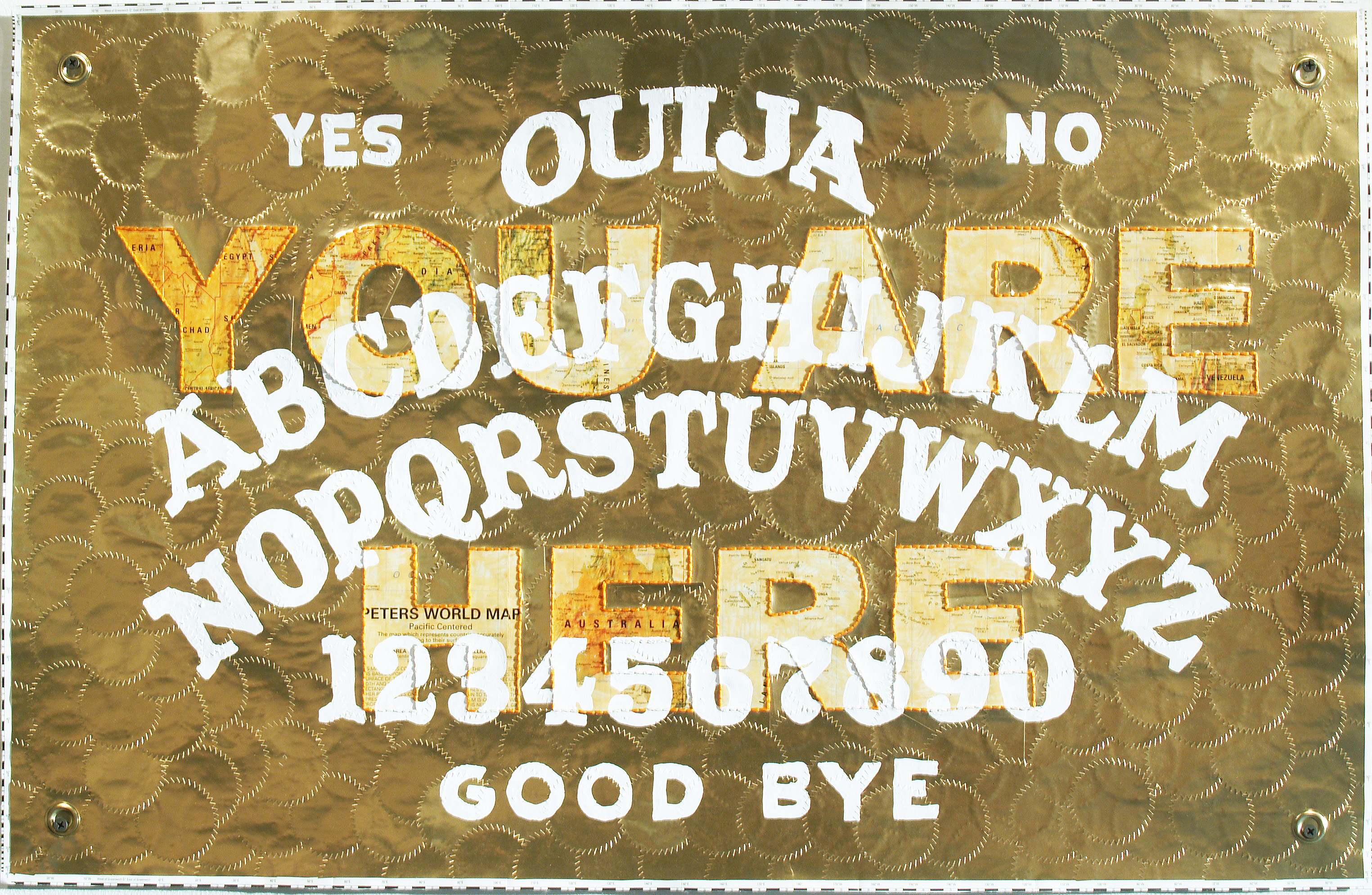
“The type of work I make is not the kind of thing I can speed up. It goes at the pace it goes,” says artist Nick DeFord. “It’s stitching. I can only do so many stitches.”
It’s easy to imagine stitching and to think of detailed quilts or elaborately-embroidered handkerchiefs. But to imagine those items is not to imagine the work that Nick makes. Nick stitches not to attach two surfaces or enhance them with detail, but to add meaning, distort meaning, change meaning.
“My work explores the visual culture of cartography, occult imagery, geographical souvenirs, and other structures of information that are altered to examine the relationship of identity, space, and place,” Nick explains. He often chooses a found object as a starting point—an old photograph, a map, or a page from a book. From there, he adds layers with paint, stickers, paper, yarn, or thread, adding dimensions to it or changing its context. “Embellishing the truth” is how Nick describes the process.
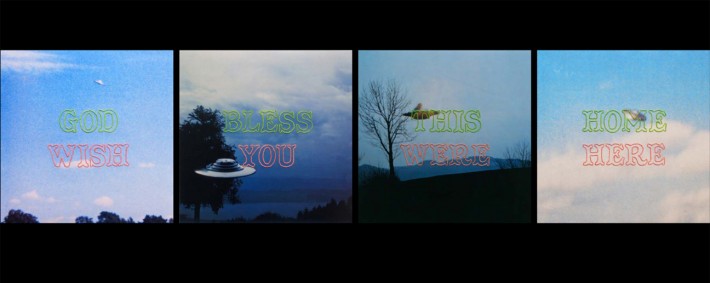
This spring, Nick will bring his unique approach to the Penland studios for a 1-week workshop called The Altered Image: Mixed-Media with Photography. The class, which will run April 24-30, 2016, will focus on physically altering photographs through collage, drawing, painting, and embroidery. Each student will transform photographs into pieces of layered art—but whether those layers are supernatural, whimsical, spooky, romantic, contradictory, or something else all together will be entirely up to them. The image is just a starting point.
“If you like spirit photography and stitching, then this workshop is for you,” Nick states. Register for The Altered Image now.
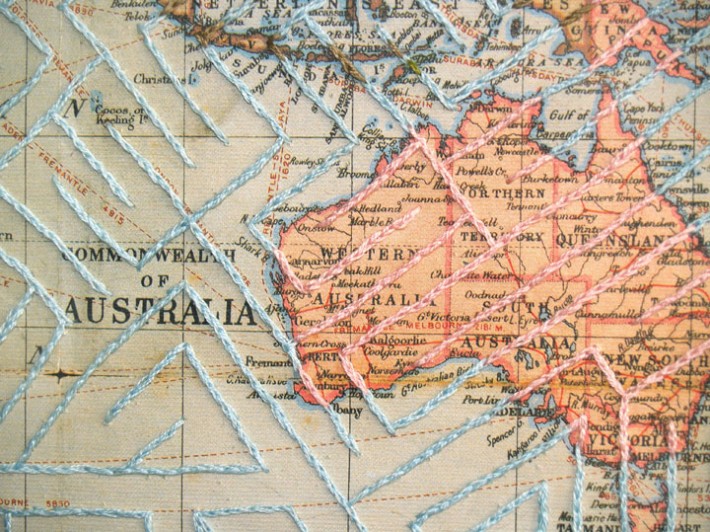
The Altered Image: Mixed-Media with Photography
Nick DeFord—Photographs are perceived to be artifacts of truth—but truth can easily be distorted, embellished, and exaggerated. This class will use embroidery, collage, and drawing/painting techniques to physically manipulate photographs as a metaphor for the psychological dissection of truth, memory, and time. We will work on photos brought from home and found photos (both from the physical world, but also the cyber world). While students are welcome to shoot and print digital photos during the workshop, we will not be using the darkroom, and the emphasis of the class will be on manipulation and embellishment after the photo has been printed. All levels. Code S03P
Studio artist and Program Director at Arrowmont (TN); teaching: University of Tennessee, Arizona State University; exhibitions: William King Museum (VA), Vanderbilt University (TN), University of Mississippi, Coastal Carolina University; collections; City of Phoenix (AZ).
